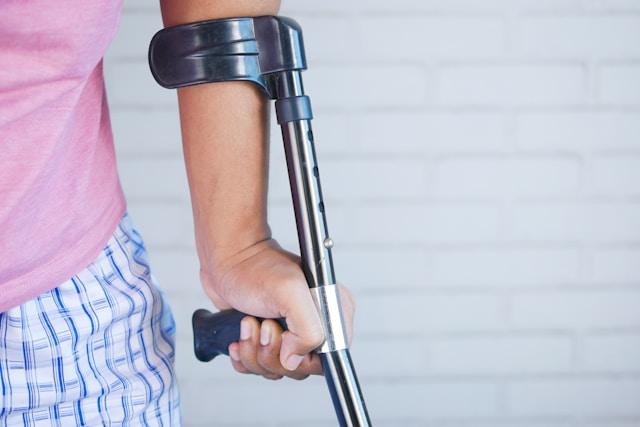In the realm of legal battles surrounding catastrophic injury cases, the importance of a robust strategy cannot be overstated. These cases, often involving life-altering injuries, demand a meticulous approach from legal professionals to ensure justice is served and fair compensation is awarded. In this article, we will delve into the essential components of constructing a strong foundation for your catastrophic injury case, emphasizing the strategic elements that can make a pivotal difference in the outcome.
Table of Contents
I. Understanding Catastrophic Injuries: A Primer
A. Defining Catastrophic Injuries
Before delving into the nuances of building a case, it’s imperative to establish a clear understanding of what constitutes a catastrophic injury. Generally, catastrophic injuries result in severe, long-term effects that significantly impact the victim’s life. These may include spinal cord injuries, traumatic brain injuries, severe burns, and amputations. Recognizing the gravity of these injuries sets the stage for a comprehensive legal strategy.
B. Assessing the Lifelong Implications
One crucial aspect of preparing a catastrophic injury case is the assessment of the long-term implications on the victim’s life. Understanding how the injury will affect their ability to work, engage in daily activities, and maintain relationships is essential for presenting a compelling case. This assessment forms the bedrock of the damages sought, encompassing medical expenses, loss of earning capacity, and emotional distress.
II. Gathering and Preserving Evidence: The Pillars of a Strong Case
A. Early Investigation and Documentation
Timeliness is paramount when it comes to catastrophic injury cases. Commencing an early and thorough investigation helps in preserving crucial evidence that may be instrumental in establishing liability. This includes obtaining accident reports, witness statements, and any available surveillance footage. The sooner this process begins, the more likely it is that pertinent evidence is preserved.
B. Expert Testimonies and Medical Documentation
Engaging expert witnesses can significantly bolster the strength of a catastrophic injury case. Medical professionals, accident reconstruction specialists, and economists can provide expert testimonies on the extent of the injuries, the circumstances of the incident, and the financial implications for the victim. Additionally, meticulous documentation of medical records, treatment plans, and rehabilitation efforts contributes to building a solid foundation.
C. Demonstrating Causation and Liability
Establishing a clear link between the defendant’s actions or negligence and the catastrophic injury is crucial. This requires a comprehensive analysis of the facts, expert opinions, and a compelling narrative that illustrates how the defendant’s conduct directly led to the catastrophic outcome. Whether it’s a car accident, a workplace incident, or a defective product, demonstrating causation is fundamental to proving liability.
III. Crafting a Persuasive Legal Narrative: The Art of Storytelling
A. Humanizing the Victim
In presenting a catastrophic injury case, it’s essential to humanize the victim, allowing the judge and jury to connect emotionally with their plight. Sharing the victim’s personal story, the challenges they face, and the impact on their loved ones creates empathy and strengthens the case. This narrative approach transforms the legal proceedings from a mere legal battle into a compelling human drama.
B. Emphasizing Negligence and Wrongful Conduct
Building a strong legal narrative involves highlighting the defendant’s negligence or wrongful conduct. Clearly articulating how the defendant breached their duty of care and directly caused the catastrophic injury reinforces the legal argument. This emphasis on the defendant’s actions, or lack thereof, adds weight to the case and positions the victim as the aggrieved party seeking justice.
C. Aligning with Legal Precedents and Statutes
An effective legal narrative is grounded in established legal principles and precedents. Aligning the case with relevant statutes and legal precedents not only strengthens the argument but also provides a framework for the court’s decision-making process. Thorough legal research and a nuanced understanding of applicable laws contribute to the persuasive power of the narrative.
IV. Strategic Negotiation and Alternative Dispute Resolution
A. Calculating Damages and Fair Compensation
Accurately calculating damages is a critical aspect of building a solid foundation for a catastrophic injury case. This involves not only current medical expenses and lost wages but also projections for future costs and losses. Collaborating with financial experts and economists aids in presenting a comprehensive assessment of the damages suffered, ensuring the sought compensation is fair and just.
B. Negotiating from a Position of Strength
Effective negotiation is often a pivotal stage in catastrophic injury cases. Armed with a well-documented case, expert testimonies, and a compelling legal narrative, negotiating from a position of strength becomes possible. Whether engaging in settlement talks or alternative dispute resolution methods, the strength of the case serves as a powerful tool in securing a favorable outcome for the victim.
C. Preparing for Litigation: A Strategic Approach
While settlement is often the preferred resolution, preparing for litigation is a strategic necessity. Building a solid case from the outset ensures that, if litigation becomes inevitable, the legal team is well-equipped to present a compelling argument in court. This strategic preparation sends a clear message to the opposing party that the victim’s legal team is ready to pursue justice through all available avenues.
V. Conclusion: Building a Lasting Impact in Catastrophic Injury Cases
Constructing a solid foundation for a catastrophic injury case requires a multifaceted and strategic approach. From understanding the nature of catastrophic injuries to presenting a compelling legal narrative and strategically negotiating, each step contributes to the strength of the case. By combining legal expertise with empathy and a relentless pursuit of justice, legal professionals can build a lasting impact for victims of catastrophic injuries, ensuring they receive the compensation they rightfully deserve. In the intricate dance of the courtroom, strength in strategy emerges as the guiding force toward a just resolution in catastrophic injury cases. If you need help with your case, Loncar Lyon Jenkins will pursue justice on your behalf for your catastrophic injury case in Odessa.

About the author: Crystal A. Davis
How does one combine a passion for journalism with a strong sense of justice? For Crystal, the choice was simple: legal journalism. Born and raised in a family of attorneys but wanting to approach the law from an investigative angle, Crystal decided that people would not hear her voice in the court but online, in magazines, journals, and other platforms. When she is not studying active lawsuits closely to report on them, she writes public-friendly articles detangling the complicated threads representing the American legal system.
Featured Photo by Towfiqu barbhuiya on Unsplash




